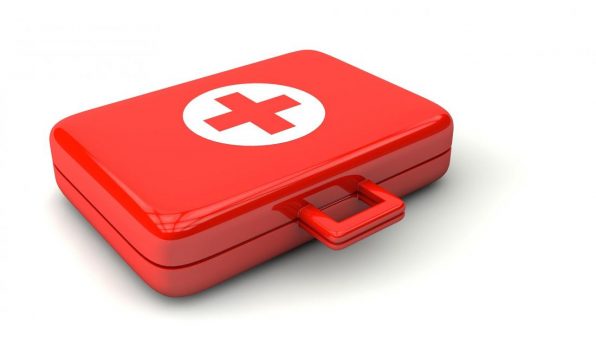What is first aid?
First aid is an emergency measure, generally consisting of simple, often life-saving techniques that most people can train to perform with minimal equipment and no previous medical experience.
The term usually refers to administering care to a human, although it can also be performed on animals.
It is not classed as medical treatment and does not replace interventions from a trained medical professional.
First aid is a combination of simple procedures and common sense.
Aims of first aid
The aims of first aid are:
- To preserve life: Saving lives is the main aim of first aid.
- To prevent further harm: The person who has experienced the injury must be kept stable, and their condition must not deteriorate before medical services arrive. This may include moving the individual away from harm, applying first aid techniques, keeping them warm and dry, and applying pressure to wounds to stop any bleeding.
- Promote recovery: Taking steps to promote recovery may include applying a bandage to a wound.
How to practice first aid
The most common term referred to in first aid is ABC. This stands for airway, breathing, and circulation. A fourth step will appear in the emergency procedures for some facilities.
- Airway: Make sure the airway is clear. Choking, which results from the obstruction of airways, can be fatal.
- Breathing: Once the airways are confirmed to be clear, determine whether the person can breathe, and, if necessary, provide rescue breathing.
- Circulation: If the person involved in the emergency situation is not breathing, the first aider should go straight for chest compressions and rescue breathing. The chest compressions will promote circulation. This saves valuable time. In emergencies that are not life-threatening, the first aider needs to check the pulse.
- Deadly bleeding or defibrillation: Some organizations consider dressing severe wounds or applying defibrillation to the heart a separate fourth stage, while others include this as part of the circulation step.
Evaluating and maintaining ABC with a patient depends on the training and experience of a first aider. As soon as ABC has been secured, the first aider can then focus on any additional treatments.
The ABC process must be carried out in that order.
However, there are times when a first aider might be performing two steps at the same time. This might be the case when providing rescue breathing and chest compressions to an individual who is not breathing and has no pulse.
It is important to use a primary survey to make sure the scene is clear of threats before stepping in to help:
- Danger: Check for dangers to the injured person and yourself. If there is a danger, can it be cleared, or can the individual be moved away from further harm? If there is nothing you can do, stand clear, and call for professional help.
- Response: Once it is clear that all danger has ceased, check if the patient is conscious and alert, ask questions, and see if you get a response. It is also important to find out whether they respond to your touch and are aware of their pain.
- Airway: Check whether the airway is clear and, if not, try to clear it. Have the injured person lying on their back, and then place one hand on the forehead and two fingers from the other hand on the chin. Gently tilt the head back while slightly raising the chin upwards. Any obstructions need to be removed from the mouth, including dentures. Only insert fingers into the mouth of the injured individual if an obstruction is present.
- Breathing: Is the individual breathing effectively? The first aider should examine the chest for movement and the mouth for signs of breathing. Afterward, get close to the person to see if air can be felt on the cheek from breathing.
The first aider then needs to carry out a secondary survey, checking for deformities, open wounds, medic alert tags, and swellings.
If the injured person is breathing safely, carry out a rapid whole-body check for the following
- open wounds
- deformities
- medical alert tags advising of underlying conditions
- swellings
This is known as a secondary survey. As soon as this has been completed, place the individual in a recovery position. At this point, the first aider should call for an ambulance.

